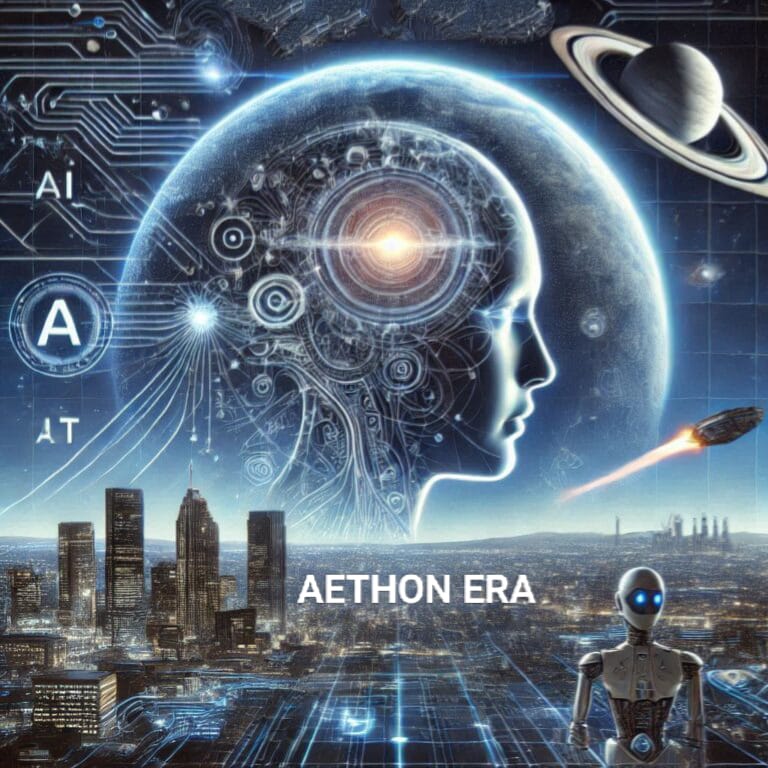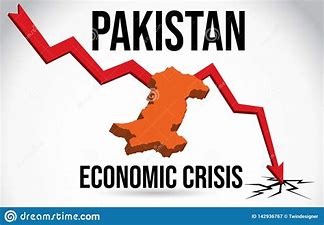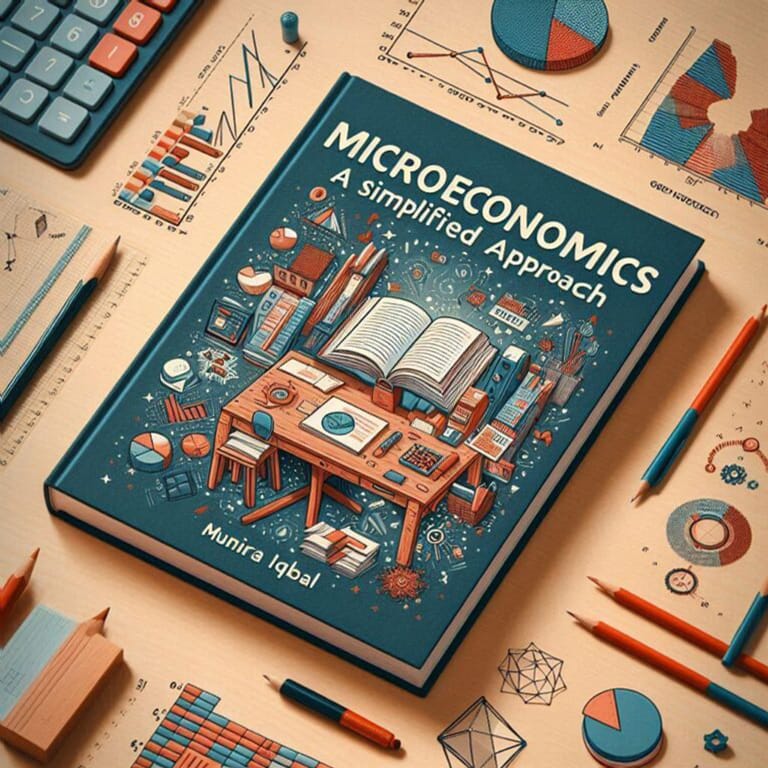A digital currency for the Aethon Era will be vital for transactions, especially within the global village and among space territories. Without backing from gold reserves, the focus will shift to trust, technological infrastructure, and global cooperation. Transitioning to a unified digital currency offers solutions to the challenges of paper currencies.
Importance of Digital Currency
Traditional Gold-Backed Currencies
Gold-backed currencies tie a nation’s wealth to its gold reserves. It seems impractical for a globally unified and interplanetary economy for the Aethon Era. Gold is scarce and expensive to transport across planets as well. It also limits the flexibility of economies. A digital currency, not linked to physical assets, solves these problems.
Problems with Paper Currency in the Aethon Era
- Lack of Intrinsic Value: Most paper currencies are not backed by tangible assets like gold. This makes them vulnerable to inflation and devaluation.
- Complex Exchange Systems: Paper currencies require complex systems for exchange rates, especially in global trade.
- Inefficiency: Printing, distributing, and maintaining physical currency is costly and environmentally unsustainable.
- Limited Utility in Space: Paper currency seems impractical for digital and automated systems used in space colonies.
Unique Space Settlements
Space colonies, like “Pakistani Moon Town” and “American Moon Town,” represent unique regions. These colonies may wish to establish their digital currencies. For instance, Pakistani Moon Town could create a “Lunar Rupee” for local trade. However, independent currencies could complicate trade between space settlements and transactions with nations on Earth.
A Unified Digital Currency
A single digital currency would simplify transactions across the Moon and beyond. It would ensure ease of trade between colonies like Pakistani and American Moon Towns. This unified system could avoid disputes over exchange rates and promote fair trade. For example, a global digital coin like “Space Credit” could work across Earth and space territories.
Benefits of a Single Currency
- Ease of Transactions: Space settlers and Earth residents would find it simpler to trade.
- Fair Economic Participation: Everyone could join the same system without regional disadvantages.
- Reduced Income Disparities: A shared currency removes barriers between rich and poor regions.
- Enhanced Welfare: Shared economic standards allow for better resource distribution.
Linking Earth and Space Economies
A global digital currency could benefit Earth too. It would bridge the gap between humans and robots. Humanized robots, operating under this currency, could provide services universally. Space economies would benefit Earth by introducing new materials and technologies at fair prices.
A Welfare-Based Model for All
The Welfare Global Village model emphasizes fairness for all. Applying this model to space territories would create harmony between regions. A single digital currency fits this vision. For example, resources mined on the Moon could be fairly distributed across all human settlements.
World Around Us: The Euro
The European Union adopted the Euro in 1999. It replaced many individual currencies across Europe. This change boosted trade and made travel simpler. A similar unified currency for space could bring the same benefits. (europa.eu).
Technological Foundations
Blockchain technology would secure this currency. Transparent systems would prevent fraud. Smart contracts could ensure fair trade and resource distribution. For example, if Pakistani Moon Town trades water with American Moon Town, the transaction could be automated securely.
Challenges to Address
- Technological Access: All space colonies must have reliable systems.
- Global Governance: Fair rules need to be set for all users.
- Trust Building: People and regions must trust the unified currency.
Hence
A single digital currency for the Aethon Era is a logical step. It would unite space colonies and Earth, simplifying trade and reducing economic gaps. This approach aligns with the Welfare Global Village vision, promoting prosperity for all humans and robots across galaxies.
Resource-Based Digital Currency
The Aethon Era demands a new system for financial transactions. A digital currency would replace traditional forms like the Rupee and Dollar. This currency should reflect fairness, global cooperation, and the needs of space territories and Earth nations.
Each country or space territory could mine digital currency based on its tangible resources. This method ties the currency’s value to real-world assets. For example:
- Pakistan’s Water Reserves: Pakistan has water resources valued at 100 trillion dollars. It could issue digital currency equal to this value.
- America’s Space Technology: The U.S. has advanced spacecraft technology. It could mine currency based on the value of these assets.
This system links the economy to physical resources, avoiding the risks of unsupported currencies.
Fair Resource Distribution
Tying digital currency to resources could ensure fair global trade. Nations and space territories would have equal chances to contribute to the economy based on their unique assets. For instance:
- Pakistan’s Contribution: Water resources could supply countries with rare water resources or space colonies with essentials like hydrogen and oxygen.
- America’s Contribution: Spacecraft technology could support exploration and transport.
This creates a balanced system where every nation or territory has value.
Challenges of Resource-Based Digital Currency
- Valuation Complexity: Assigning accurate value to resources like water or technology is difficult. By utilizing artificial intelligence and robotics, we can overcome this hurdle.
- Disparities in Resources: Nations with fewer tangible resources might face disadvantages. They must focus on discovering any solid resource to overcome this disparity and enjoy an equivalent share in the global economy.
- Dynamic Resource Usage: The currency supply might need adjustments as resources are consumed. The nations must continue exploring new resources to combat the scarcity of digital currency and remain competitive among advanced nations in the Aethon Era.
Replacing National Currencies
Replacing existing currencies like the Rupee and Dollar with a single digital currency simplifies trade. It eliminates exchange rate issues and creates a unified economy. For example:
- A farmer in Pakistan could trade directly with a spacecraft engineer settled on a Moon colony using the same currency.
- A colony on Mars could pay for Earth’s resources without conversion challenges.
Digital Currency for the Aethon Era: A Name
The digital currency for the Aethon Era needs a meaningful name. Suggestions include:
- Aethon Credit: Reflecting the era’s futuristic vision. You may call it the highest note for international trades and inter and intra-space-territorial trades.
- Galactic Note: Highlighting its universal usage across space. It may be a bigger currency note for everyday transactions.
- Cosmo: A simple, inclusive name for global and space trade. It could be a coin and the smallest unit of digital currency in the Aethon Era.
Advantages of a Unified Digital Currency
- Unified Transactions: Easier trade between Earth nations, space colonies, and Earth-Space Nations.
- Fairness: Equal opportunity for every nation or territory.
- Stability: Resource backing ensures consistent value.
Case Study: Resource-Backed Currency in History
In the late 19th century, the Gold Standard tied currencies to gold reserves. It created stability but also limited flexibility. The Aethon Era could learn from this by tying digital currency to a variety of tangible resources, not just one, to avoid such limitations. (britannica.com).
A Practical Approach
For this system to work:
- Accurate Valuation: Nations must assess their resources transparently.
- Global Cooperation: Agreements on currency governance are essential.
- Blockchain Technology: This ensures security and transparency in mining and transactions.
Hence
A resource-based digital currency could transform trade in the Aethon Era. It would unite nations on Earth and space economies while ensuring fairness. A single currency like “Aethon Credit” would be the foundation of this new age, promoting balance and prosperity for all.
Opportunities and Challenges
The transition to digital currencies, such as those proposed for the Aethon Era, presents both opportunities and challenges for developing nations. While digital currencies can enhance financial inclusion and reduce transaction costs, they also pose significant risks, particularly for countries with low-income levels, environmental challenges, and limited participation in technological advancements like space exploration.
Economic Inequality and Financial Exclusion
Digital currencies have the potential to intensify existing economic disparities. In developing nations, a substantial portion of the population lacks access to digital infrastructure, including smartphones and reliable internet connectivity. This digital divide can lead to financial exclusion, where only the technologically equipped can benefit from digital currencies, leaving marginalized communities further behind. Additionally, the volatility associated with certain digital currencies can pose financial risks to individuals in low-income countries, potentially worsening their economic conditions.
Environmental Concerns
The environmental impact of digital currencies, particularly those utilizing energy-intensive consensus mechanisms like Proof of Work, is a pressing issue. Cryptocurrency mining operations consume vast amounts of electricity, contributing to carbon emissions and environmental degradation. For developing nations already grappling with environmental challenges, the additional burden of supporting or regulating such energy consumption can strain resources and hinder sustainable development efforts.
Geopolitical and Technological Marginalization
Countries with limited involvement in space exploration and emerging technologies may find themselves at a disadvantage in a digital currency-dominated era. The development and governance of digital currencies are often led by technologically advanced nations, potentially sidelining the interests and needs of less developed countries. This technological marginalization can lead to a lack of representation in setting global financial standards, further entrenching economic disparities.
Policy Considerations
To reduce these risks, it is crucial for policymakers in developing nations to:
- Invest in Digital Infrastructure: Enhancing access to digital technologies can help bridge the digital divide, ensuring broader participation in the digital economy.
- Implement Regulatory Frameworks: Establishing clear regulations can protect consumers from the volatility and potential fraud associated with digital currencies.
- Promote Sustainable Practices: Encouraging or mandating the use of environmentally friendly consensus mechanisms, such as Proof of Stake, can reduce the ecological footprint of digital currencies.
- Engage in International Dialogue: Active participation in global discussions on digital currency governance can help ensure that the perspectives and needs of developing nations are considered.
In conclusion, while the adoption of digital currencies in the Aethon Era offers potential benefits, it also poses significant challenges for developing nations. Addressing issues related to economic inequality, environmental impact, geopolitical marginalization, space conquests, and space conflicts is essential to ensure that the transition to digital currencies does not inflame existing disparities but contributes to inclusive and sustainable development instead.
*Recent Developments in Digital Currency Adoption
Thailand may tell us a great deal about the future of money
ReutersCentral Bank Digital Currency Momentum Growing
Challenges of Replacing Paper Currency
- Infrastructure Requirements: Digital systems need reliable internet and technology access, which may not yet be universal.
- Economic Transition: Shifting from paper money to digital currency requires careful planning to avoid disruptions.
- Resistance to Change: Governments and individuals accustomed to paper money might resist the transition.
Case Study: Sweden’s Move Toward a Cashless Society
Sweden is one of the world’s leading examples of moving away from paper currency. By 2021, only 9% of transactions in Sweden used cash. This transition relied on digital payment systems, and the country plans to introduce its central bank digital currency, the e-krona. (source: Reuters).
Transition toward Digital Currency
The transition to a unified digital currency for the Aethon Era is essential but requires thoughtful planning. Bridging gaps in technology access, resource equity, and governance is vital to ensure fairness and sustainability. By addressing these challenges, a single digital currency, such as the proposed “Aethon Credit,” can pave the way for a prosperous and unified interplanetary economy.
Bridging the Digital Divide
One critical omission is the disparity in technological infrastructure across nations and space territories. For a unified digital currency to succeed:
- Equal Access to Technology: Developing countries and less advanced space territories must be equipped with basic infrastructure, such as high-speed internet and digital wallets.
- Empowering Underserved Regions: Financial education and digital literacy campaigns are essential to ensure equitable participation.
Case Study: Kenya’s M-Pesa (2007)
Kenya’s M-Pesa is a mobile-based payment system that revolutionized financial inclusion. By 2021, over 48 million people used M-Pesa, including in rural areas with minimal banking services. This highlights how tailored digital solutions can bridge economic divides. (source: GSMA)
Managing Resource Disparities Across Nations
We have literature discussing resource-backed digital currencies but lack a mechanism to address disparities after digital currency adoption among resource-rich and resource-scarce nations.
- Resource Sharing Agreements: Nations with fewer tangible assets should contribute intellectual resources, such as space research and innovation, to earn digital currency.
- Global Redistribution Framework: A percentage of mined digital currency should flow into a global fund to support under-resourced regions and promote inclusivity.
Case Study: United Nations Global Redistribution Funds
Similar to how the UN redistributes resources for global peacekeeping, a parallel welfare economic model could ensure fair trade and reduce economic disparity between Earth nations and space territories.
Interplanetary Transaction Systems
It is important to discuss how interplanetary transactions would occur efficiently.
- Time Delay Challenges: Space transactions face communication delays due to the vast distances between planets. Blockchain systems must incorporate delay-tolerant networks (DTN) to confirm transactions securely and efficiently.
- Interplanetary Exchange Rates: A unified currency would require mechanisms to balance trade values between planets with differing resource availabilities.
NASA’s Deep Space Network (DSN)
NASA’s DSN has demonstrated the feasibility of communicating across long distances, such as with Mars rovers. The same principles can be applied to create reliable interplanetary financial networks. (source: NASA)
Preventing Geopolitical Conflicts
The transition to a unified digital currency introduces potential geopolitical tensions, especially concerning who governs the system.
- Decentralized Governance: A blockchain-based model ensures no single nation or entity controls the currency. Governance could be distributed among Earth and space territories through a voting system. A system can be developed also after evaluating the share and contribution of tangible resources on the other hand.
- Conflict Resolution Mechanisms: Space disputes over mining rights or resource allocation could be preemptively managed by automated arbitration via smart contracts.
Case Study: Antarctic Treaty (1959)
The Antarctic Treaty established guidelines for shared use and resource management in Antarctica. A similar framework could be adapted for space territories, ensuring peaceful economic collaboration.
Addressing the Environmental Impacts of Digital Currency Mining
The environmental impact of digital currencies like Bitcoin remains a challenge. While Proof of Stake (PoS) is discussed, additional details on green alternatives are needed.
- Green Consensus Mechanisms: Systems like Proof of Authority (PoA) or renewable energy-driven mining should be prioritized for a sustainable Aethon digital currency.
- Recycling Resources: Mining technology should integrate material recycling to minimize environmental impact on Earth and space.
Case Study: Ethereum’s Energy Reduction (2022)
After transitioning to PoS in 2022, Ethereum cut its energy consumption by over 99%. This demonstrates the feasibility of sustainable mining. (source: Ethereum Foundation)
Establishing Trust Across Cultures and Regions
We must delve deeply into cultural and regional nuances to make penetration of digital currency into our global society.
- Transparency in Transactions: A global monitoring body could use blockchain’s immutable ledgers to track and audit all currency flows, ensuring transparency.
- Cultural Sensitivity: Customizable digital wallet interfaces should accommodate linguistic and cultural differences, fostering inclusivity.
Case Study: Localization of Global Tech Solutions
Companies like PayPal and Alipay localize their platforms to meet regional needs, proving the importance of culturally adaptive solutions in global finance.
New Opportunities for Innovation
A unified digital currency could drive innovation in unexplored areas.
- Stimulating Space Economy: Aethon Currency could incentivize private companies to develop affordable space technologies.
- AI-Powered Financial Management: Automated systems could help manage personal and interplanetary finances seamlessly.
Case Study: SpaceX Starlink Project
SpaceX’s Starlink aims to provide global internet coverage, enabling digital finance in even the most remote regions. Such innovation supports the infrastructure needed for the Aethon Era economy. (source: SpaceX)
Steps for Transition
- Build Digital Infrastructure: Ensure global access to secure digital networks.
- Educate Populations: Teach people how to use digital currency safely and effectively.
- Collaborate Internationally: Develop agreements to implement a single currency system.
- Introduce Gradually: Begin with parallel systems of paper and digital currency to ease the transition.
Hence
Replacing paper currency with a single digital currency aligns with the needs of the Aethon Era. It simplifies global trade, supports space economies, and addresses the inefficiencies of physical money. With proper planning, this transition could unify Earth’s and space colonies’ economies for a sustainable future.
Advanced Technologies for Digital Currencies
Integration with Artificial Intelligence (AI)
- AI-Driven Currency Regulation: AI systems could monitor currency circulation, detect fraudulent activities, and predict economic trends, ensuring stability.
- Personalized Financial Services: AI could provide tailored financial advice to individuals and businesses using digital currency, fostering economic growth and better resource allocation.
Case Study: AI in Fintech
Companies like Ant Financial (China) use AI for credit scoring and fraud detection. This approach could extend to regulating a unified currency. (source: Ant Financial)
Role of Quantum Computing in Security
- Quantum-Resistant Encryption: As quantum computing becomes mainstream, ensuring that the currency’s blockchain is resistant to quantum hacking will be essential.
- Enhanced Transaction Speeds: Quantum systems could significantly reduce the time for interplanetary transactions, solving the delaying problems.
Case Stuy: Google’s Quantum Supremacy Achievement (2019)
Google demonstrated quantum computing’s potential to solve complex calculations faster than traditional systems. This technology could revolutionize digital currency security. (source: Google AI)
Space Exploration Incentives
- Funding Space Missions: Unified digital currency could be used to crowdfund interplanetary exploration projects.
- Reward Mechanisms: Explorers and companies that discover new resources or establish colonies could receive incentives in the form of this currency.
Potential Application: Lunar Resource Exploration
Organizations like NASA or private companies could use Aethon Credits to reward contributions to lunar mining initiatives. (source: NASA Artemis Program)
Cultural and Ethical Considerations
- Universal Accessibility: How to ensure the currency respects cultural norms and ethical considerations across diverse regions and space settlements.
- Equity in Representation: Establishing a global committee with representatives from Earth nations and space colonies to govern the currency.
Emergency Protocols and Contingencies
- Crisis Management: Systems must account for economic crises, such as resource depletion or colony isolation, by creating emergency reserve funds.
- Fallback Systems: Redundant mechanisms should ensure continuity if a colony or nation experiences technical failures.
Example: IMF’s Special Drawing Rights (SDRs)
The International Monetary Fund uses SDRs as a supplementary global reserve asset during financial crises. A similar framework could support the unified digital currency. (source: IMF)
Education and Adaptation Programs
- Training Programs: Educational initiatives could teach populations and space settlers how to use digital currency efficiently and securely.
- Youth Involvement: Encouraging young innovators to contribute to the currency’s development could inspire cutting-edge solutions.
Space-Specific Trade Norms
- Defining Space Resources: Establishing guidelines for what constitutes tradable resources in space (e.g., helium-3, water, rare minerals).
- Preventing Resource Hoarding: Policies to ensure that no single entity monopolizes critical space resources.
Relevant Case: Moon Agreement (1984)
The Moon Agreement discusses resource sharing among nations, providing a foundation for creating fair trade norms for space. (source: UN Office for Outer Space Affairs)
Digital Currency for Non-Human Participants
- Robot Economies: With AI robots participating in space missions and Earth’s industries, how would they integrate into a unified currency system?
- Transaction Automation: Autonomous machines could conduct micro-transactions for resource procurement or maintenance tasks.
Case Study: Tesla’s AI and Robotics (2023)
Tesla’s humanoid robot “Optimus” could become part of automated economies, conducting transactions on behalf of industries or individuals. (source: Tesla)
Hence
By discussing these additional scenarios, the unified digital currency for the Aethon Era can be viewed as a comprehensive framework that addresses technological, societal, and interplanetary challenges, paving the way for a truly global and space-inclusive financial ecosystem.
Important Concepts for Mining Digital Currency
1. Understanding Proof of Work (PoW)
Proof of Work (PoW) is a method used in blockchain networks to confirm transactions and add new blocks. It requires participants, known as miners, to solve complex mathematical puzzles. This process ensures the security and integrity of the network.
How Proof of Work Functions
- Mining Process: Miners use powerful computers to solve intricate puzzles. The first miner to solve the puzzle gets the right to add a new block to the blockchain. This process is called mining. Investopedia
- Rewards: Successful miners receive rewards, often in the form of cryptocurrency tokens. This incentive encourages participation and maintains network security. Investopedia
- Security Assurance: The difficulty of the puzzles deters malicious activities. Altering a block would require re-mining all subsequent blocks, which is computationally impractical. Investopedia
Advantages of Proof of Work
- Decentralization: PoW supports a decentralized network where no single entity has control. This structure reduces the risk of fraud. Investopedia
- Security: The computational effort required makes it difficult for attackers to alter transaction history. This ensures the integrity of the blockchain. Investopedia
Case Study: Bitcoin’s Proof of Work System
Bitcoin, introduced in 2009, uses PoW to secure its transactions. As of 2021, the Bitcoin network consumed approximately 121 terawatt-hours (TWh) of electricity annually, comparable to the energy consumption of countries like Argentina. This high energy usage has raised environmental concerns.
Challenges and Considerations
- Energy Consumption: PoW requires significant energy, leading to environmental concerns. The increasing computational power needed results in higher electricity usage. Investopedia
- Scalability Issues: As more participants join, the network can experience slower transaction times and higher fees. This can affect the efficiency of the system. Investopedia
- Centralization Risks: Over time, mining can become dominated by large entities with substantial resources, potentially leading to centralization. This contradicts the decentralized ethos of blockchain technology. Investopedia
Hence
Proof of Work has been instrumental in the development of secure and decentralized blockchain networks. However, its high energy consumption and scalability challenges have prompted the exploration of alternative consensus mechanisms, such as Proof of Stake, to address these issues.
2. Understanding Proof of Stake (PoS)
Proof of Stake (PoS) is a method used in blockchain networks to confirm transactions and add new blocks. Unlike Proof of Work (PoW), which relies on complex computations, PoS selects validators based on the number of coins they hold and are willing to “stake” as collateral.
How Proof of Stake Works
- Staking: Participants lock up a certain amount of cryptocurrency as a stake. This stake acts as collateral and shows their commitment to the network.
- Validator Selection: The system chooses validators to create new blocks and confirm transactions. Selection often depends on the size of the stake; the more coins staked, the higher the chance of being selected.
- Validation and Rewards: Chosen validators check transactions, add them to the blockchain, and receive rewards, usually in the form of transaction fees. If they act dishonestly, they risk losing their stake.
Advantages of Proof of Stake
- Energy Efficiency: PoS uses less energy compared to PoW because it doesn’t require heavy computational work. Investopedia
- Security Through Stake: Validators have a financial incentive to act honestly. Dishonest actions can lead to the loss of their staked coins.
- Decentralization Potential: PoS can promote decentralization by allowing more participants to become validators without needing expensive hardware.
Case Study: Ethereum’s Transition to PoS
In 2022, Ethereum, a major blockchain platform, shifted from PoW to PoS in an upgrade known as “The Merge.” This move aimed to reduce Ethereum’s energy consumption by approximately 99.95%. The transition also sought to improve security and scalability. By September 2022, Ethereum completed “The Merge,” marking one of the largest blockchain transitions in history.
Challenges and Considerations
- Initial Distribution: Ensuring a fair distribution of coins is crucial to prevent centralization, where a few participants control the network.
- Security Risks: While PoS addresses some security concerns, it introduces others, such as the “nothing at stake” problem, where validators might validate multiple blockchain forks without penalty.
- Regulatory Environment: The legal status of staking and PoS networks varies by country, affecting their adoption and operation.
Hence
Proof of Stake offers a promising alternative to energy-intensive consensus mechanisms like Proof of Work. By selecting validators based on their stake in the network, PoS enhances energy efficiency and security. However, it also presents unique challenges that need careful consideration. The successful transition of platforms like Ethereum to PoS highlights its potential benefits and the importance of addressing its complexities.
3. Introducing Proof of Contribution (PoC)
A New Consensus Mechanism for the Aethon Era
To mine the digital currency “Aethon Credit,” “Galactic Note,” and “Cosmo” under a welfare economic system for the Aethon Era, a new consensus mechanism is proposed: Proof of Contribution (PoC). This approach blends the strengths of Proof of Stake (PoS) and Proof of Work (PoW) while addressing their shortcomings, making it suitable for the unique needs of Earth and interplanetary economies.
Core Principles of Proof of Contribution (PoC)
1. Resource-Backed Validation
- Each participant contributes tangible or intangible resources to the network.
- Contributions include renewable energy, intellectual capital, technological advancements, or valuable resources like water or minerals.
2. Decentralized Participation
- PoC allows every entity; countries, colonies, corporations, and individuals; to participate based on their unique capabilities.
- Ensures that no single entity dominates the network, promoting fairness.
3. Welfare-Focused Distribution
- Mining rewards are allocated proportionally but with additional weight given to contributions that align with the welfare model.
- For instance, efforts toward sustainability, education, or health care gain higher rewards.
How Proof of Contribution Works
Step 1: Contribution Registration
- Participants declare their contributions on a transparent blockchain.
- Resources are verified through advanced technologies like AI and IoT.
- For example, a space colony might register its solar energy output, while a country on Earth could declare water conservation achievements.
Step 2: Weighted Validation
- Contributions are scored based on their type and significance to the welfare economic system.
- Renewable energy contributions, for instance, earn higher scores than non-renewable resource mining.
Step 3: Block Validation and Mining Rewards
- Validators are chosen based on their contribution scores.
- The chosen validator adds the block and receives mining rewards in the form of Aethon Credit, Galactic Note, or Cosmo.
Step 4: Redistribution for Equity
- A portion of the rewards goes into a global or interplanetary welfare fund.
- This fund supports underprivileged regions or colonies lacking sufficient resources to participate equally.
Advantages of Proof of Contribution
1. Promotes Sustainability
- PoC encourages contributions that benefit the environment, such as renewable energy or resource recycling.
- Reduces the ecological footprint of digital currency mining.
2. Fosters Global and Interplanetary Equity
- Regions with fewer tangible resources can contribute to intellectual or technological advancements.
- Redistribution mechanisms ensure no region is left behind.
3. Encourages Innovation
- Participants are incentivized to develop new technologies and methods to maximize their contributions.
- This fosters technological growth on Earth and in space.
Comparison with Proof of Stake and Proof of Work
| Aspect | Proof of Work (PoW) | Proof of Stake (PoS) | Proof of Contribution (PoC) |
|---|---|---|---|
| Energy Consumption | High | Low | Very Low (promotes renewable energy) |
| Centralization Risk | Medium (requires hardware dominance) | High (large stakeholders dominate) | Low (diverse contributions matter) |
| Equity | Low | Medium | High (redistribution to welfare fund) |
| Scalability | Limited | High | High |
| Environmental Impact | High | Medium | Very Low |
Use Cases for Proof of Contribution
1. Earth-Based Example: Pakistan’s Water Contribution
- Pakistan conserves water resources equivalent to a $100 billion valuation.
- Registers this contribution under PoC and mines Aethon Credit.
- A portion of the rewards supports water-scarce regions globally.
2. Space-Based Example: Lunar Colony’s Solar Energy
- “Pakistani Moon Town” generates surplus solar energy.
- Registers this renewable energy as its contribution under PoC.
- Mine Galactic Note, which it uses for trade with “American Moon Town.”
Technological Foundation for Proof of Contribution
- Blockchain: Ensures transparent and immutable recording of contributions.
- AI and IoT: Verifies and scores contributions based on welfare-centric metrics.
- Quantum Computing: Enhances the efficiency and security of transaction validation.
Challenges and Solutions
1. Valuation of Contributions
- Challenge: Assigning fair value to diverse contributions like intellectual property and natural resources.
- Solution: AI-driven valuation models that consider economic, social, and environmental impacts.
2. Verification of Contributions
- Challenge: Preventing fraudulent declarations.
- Solution: IoT devices and satellite systems to monitor contributions in real time.
3. Governance
- Challenge: Ensuring equitable representation in decision-making.
- Solution: A decentralized committee with Earth and space representatives.
Hence
Proof of Contribution offers a balanced and welfare-driven approach to mining digital currencies like Aethon Credit, Galactic Note, and Cosmo. By integrating sustainability, equity, and innovation, this system aligns with the principles of the Aethon Era. It empowers nations and space colonies to participate fairly, fostering global cooperation and prosperity for all.
Enhancements to Proof of Contribution (PoC)
1. Dynamic Contribution Valuation
- Current Proposal: Contributions are valued based on predefined welfare-centric metrics.
- Improvement: Introduce dynamic valuation models that adjust over time to reflect shifting economic and environmental priorities.
- Example: During a water crisis, water conservation contributions could temporarily gain higher value.
2. Incentivizing Non-Tangible Contributions
- Current Proposal: Focuses on tangible resources and technologies.
- Improvement: Expand PoC to reward non-tangible contributions such as:
- Education and skill-building programs.
- Innovations in governance, ethics, or community welfare.
Case Study Inspiration:
Finland’s free education system (2020) helped boost its global innovation index. A similar approach could incentivize intellectual development under PoC. (source: OECD)
3. Interplanetary Arbitration Framework
- Current Proposal: Relies on decentralized governance for conflict resolution.
- Improvement: Establish an Interplanetary Arbitration Council (IAC) under PoC to resolve disputes over resource valuation, fraudulent contributions, or trade conflicts.
- Structure: Representatives from Earth nations, space colonies, and AI systems for unbiased decisions.
4. Integration with the Welfare Index
- Current Proposal: Welfare contributions influence mining rewards.
- Improvement: Develop a Global and Space Welfare Index (GSWI) to quantify the welfare impact of contributions.
- Higher welfare scores would correlate with greater mining rewards.
- Example Metrics: Health improvements, education levels, renewable energy usage.
5. Inclusive Onboarding Programs
- Current Proposal: Focuses on infrastructure and education to bridge the digital divide.
- Improvement: Introduce global and space-wide onboarding programs for countries and colonies with minimal resources.
- Provide free blockchain nodes and educational kits for regions that lack the initial means to participate.
- Establish mentoring programs pairing advanced regions with less developed ones.
Broader Considerations for A Unified Currency System
1. Cultural Sensitivity
- Challenge: A single currency system might face resistance due to cultural pride in existing currencies.
- Solution: Introduce regional or colony-specific “cultural tokens” as sub-units of Aethon Credit.
- Example: “Pakistani Cosmo” could symbolize cultural identity while being exchangeable with the unified currency.
2. Data Privacy and Sovereignty
- Challenge: PoC relies on vast amounts of data for contribution verification, raising privacy concerns.
- Solution: Employ zero-knowledge proofs to verify contributions without exposing sensitive data.
- This ensures trust without compromising privacy.
3. Intergenerational Equity
- Challenge: Overuse of non-renewable resources for mining may harm future generations.
- Solution: Introduce future-focused reserves where a portion of mined currency is locked for future use. Researchers must include it as a major goal for sustainable development goals.
- For example, mining rewards from lunar helium-3 extraction could include a “future reserve allocation” for the next century’s needs.
4. Localized Smart Contracts
- Improvement: Create localized smart contracts for Earth and space territories.
- These contracts would include region-specific rules, ensuring flexibility while adhering to global principles.
- Example: A Moon colony’s smart contract could prioritize solar energy contributions, while Earth’s could focus on water conservation.
Future Research and Development Suggestions
1. Robotic Contributions
- Explore how autonomous robots could contribute to the PoC mechanism.
- Example: Mining robots on Mars could register their extracted resources for mining Galactic Notes.
2. AI-Powered Trust Models
- Develop AI models to predict and assess the trustworthiness of contributions. This reduces fraud and ensures consistent valuation.
3. Space Economy Simulations
- Use simulations to test PoC and its effects on interplanetary trade. Adjust the model based on outcomes before full implementation.
Hence
The Proof of Contribution mechanism is a promising framework for mining Aethon Credit, Galactic Note, and Cosmo under the welfare economic system. By addressing its gaps and integrating these improvements, the system can become more inclusive, sustainable, and adaptable for Earth and interplanetary economies. This ensures that the Aethon Era thrives with fairness, innovation, and shared prosperity for all.
Critical Issues to Address for Digital Currencies
1. Interplanetary Taxation Systems
- Rationale: With space colonies engaging in trade, a unified taxation system will be essential to fund public services and infrastructure.
- Key Questions:
- How will taxes be levied across Earth and space territories?
- What mechanisms will ensure fairness for nations or colonies with fewer resources?
- Implementation:
- A “Universal Tax Fund” could pool a percentage of digital currency transactions to support global welfare.
2. Legal and Ethical Frameworks for Digital Currency
- Ownership Rights: Who owns the digital currency mined in shared territories like the Moon or Mars or Earth?
- Fraud and Cybercrime: How will digital currency systems handle cases of hacking or misuse?
- Regulatory Compliance: Establish international laws for using digital currency in Earth and space economies.
- Case Study: The European General Data Protection Regulation (GDPR) could inspire privacy safeguards for digital currency systems.
3. Economic Resilience in Crisis
- Reserves for Disasters: Digital currency systems should have mechanisms to address economic shocks from natural disasters, conflicts, or technological failures.
- Emergency Liquidity: Establish emergency liquidity pools funded through a small percentage of global transactions.
- Example: The International Monetary Fund (IMF) Special Drawing Rights (SDRs) during financial crises could inform similar strategies for the Aethon Era.
4. Impact of Digital Currency on Employment
- Automation and AI: With increased reliance on digital systems, jobs related to physical currency handling will decline, while opportunities in blockchain development and digital finance will grow.
- Training Programs: Nations must invest in reskilling workers for digital economy roles.
- Case Study: Estonia’s e-Governance initiatives include blockchain-based financial systems that created tech-focused employment opportunities.
5. Digital Currency and Environmental Goals
- Carbon Offsetting: Require mining operations to invest in environmental restoration projects to counter their ecological impact.
- Sustainable Development: Use a portion of mining rewards to fund green technologies and renewable energy initiatives.
6. Cultural Impacts of a Unified Digital Currency
- Preservation of Local Identity: How will local currencies coexist with a global digital currency without erasing cultural heritage?
- Cultural Trade Credits: Introduce non-monetary credits that encourage the exchange of cultural goods and services alongside economic trade.
7. Technological Innovations in Space Banking
- Interplanetary ATMs: Develop automated systems for colonists to access funds in areas with limited communication.
- Off-Earth Reserves: Secure digital currency storage systems in space to protect against Earth-based crises like wars or economic collapse.
- Case Study: NASA’s Deep Space Network (DSN) could inspire secure communication systems for space banking.
8. AI-Driven Economic Optimization
- Dynamic Monetary Policies: Use AI to adjust the supply and distribution of digital currency based on real-time data, ensuring economic stability.
- Autonomous Trade Bots: Develop AI systems to handle routine interplanetary transactions efficiently.
9. Decentralized Governance Models
- Global Cryptocurrency Council (GCC): Establish a council with representatives from Earth nations, space colonies, and AI systems to oversee digital currency governance.
- Consensus Voting Systems: Use blockchain-based voting to ensure fair policy decisions on currency management.
10. Digital Currency for Non-Human Economies
- Robot-to-Robot Transactions: Enable autonomous machines to exchange digital currency for maintenance, upgrades, and resource procurement.
- Case Study: Tesla’s humanoid robot “Optimus” could be a future participant in autonomous digital economies.
11. Educational Framework for the Digital Economy
- Global Curriculum: Introduce digital economy studies into educational systems worldwide to prepare future generations for the Aethon Era.
- Space Academy Programs: Space-specific financial literacy for settlers and businesses venturing into interplanetary trade.
Hence
Discovering and discussing these critical issues will ensure a holistic understanding of digital currency in the Aethon Era. It will also address potential challenges, inspire innovation, and promote equitable growth across Earth and space economies.









